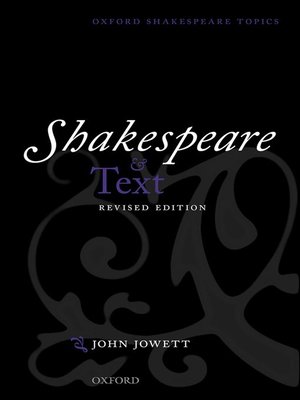
Sign up to save your library
With an OverDrive account, you can save your favorite libraries for at-a-glance information about availability. Find out more about OverDrive accounts.
Find this title in Libby, the library reading app by OverDrive.



Search for a digital library with this title
Title found at these libraries:
| Loading... |
Shakespeare and Text is built on the research and experience of a leading expert on Shakespeare editing and textual studies. The first edition has proved its value as an indispensable and unique guide to its topic. It takes Shakespeare readers to the very foundation of his work, explaining how his plays first took shape in the theatre where writing was part of a larger collective enterprise. The account examines the early modern printing industry that produced the earliest surviving texts of Shakespeare's plays. It describes the roles of publisher and printer, the controls exerted through the Stationers' Company, and the technology of printing. A chapter is devoted to the book that gathered Shakespeare's plays together for the first time, the First Folio of 1623. Shakespeare and Text goes on to survey the major developments in textual studies over the past century. It builds on the recent upsurge of interest in textual theory, and deals with issues such as collaboration, the instability of the text, the relationship between theatre culture and print culture, and the book as a material object. Later chapters examine the current critical edition, explaining the procedures that transform early texts in to a very different cultural artefact, the edition in which we regularly encounter Shakespeare. The new revised edition, which builds on Jowett's research for the New Oxford Shakespeare, engages with scholarship of the past decade, work that has transformed our understanding of textual versions, has opened up the taxonomy of Shakespeare's texts, and has significantly extended the picture of Shakespeare as a co-author. A new chapter describes digital text, digital editing, and their interface with the traditional media.






